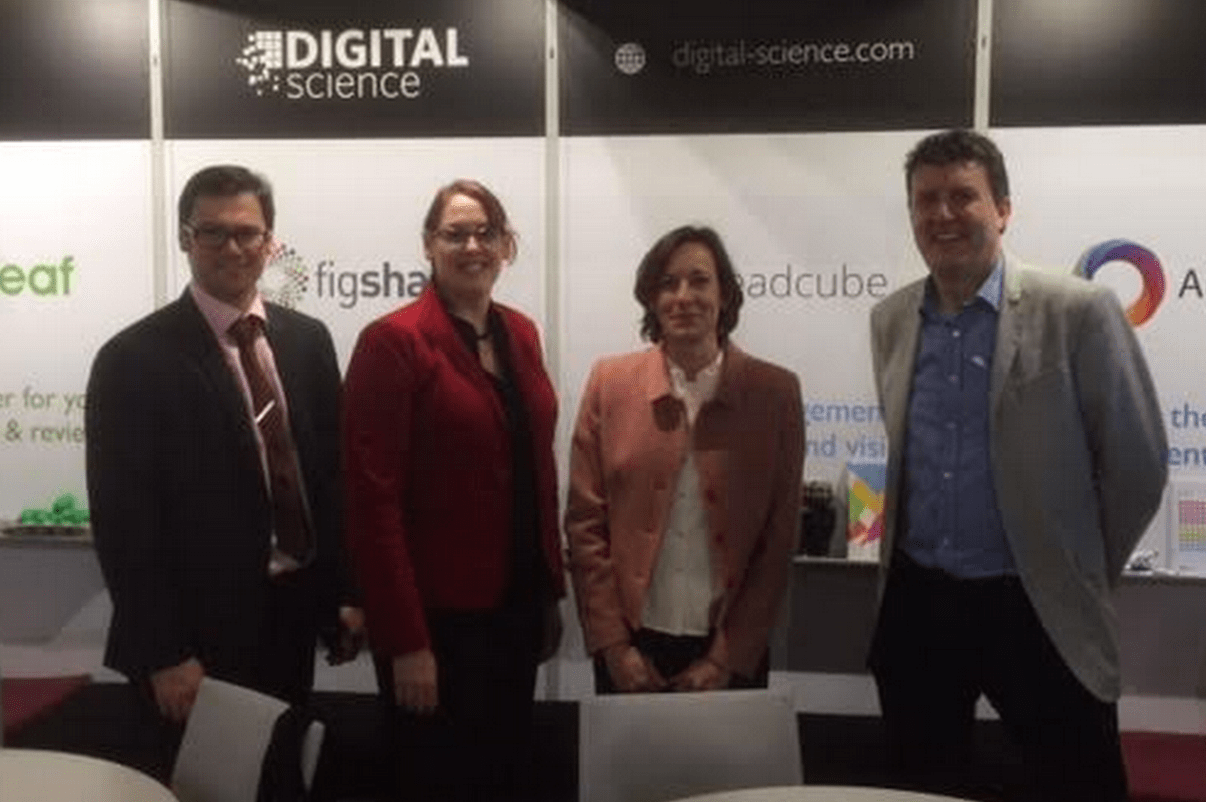Subscribe to our newsletter
A Year of Growth, in More Ways than One
Although Digital Science turned five years old earlier this month, in many ways we still feel like a startup. In part this is because many of our products are fairly new – 2015 was the first time we had fully featured offerings from Altmetric, Figshare, ReadCube and Overleaf. So it’s been a particularly important year for the Digital Science publisher business.
We had a remarkable year in terms of new customers, including some who now rely on two or more of our publisher offerings. We also hit the milestone of partnering with more than 100 publishers.
But as we in the Publisher Relations team (Adrian, Betsy, Phill and I) look back, what strikes us most is how much we learned from our customers and the scholarly research community we serve.
Learning from publishers

MIT press used Altmetric data to help their editors curate articles for their new ebook series, the first case we were aware of in which Altmetric was used in this way. And when Ecological Society of America launched a new journal designed to attract younger researchers they used a combination of Google analytics and Altmetrics to provide feedback on marketing efforts. The Altmetrics data was pivotal in enabling them to create a social marketing strategy, prove it worked and build the community around the journal.
Working with American Chemical Society to deploy Figshare on their platform helped us identify the file types most common and important to chemists and resulted in Figshare launching a custom-built 3D Crystallographic Information File viewer. ACS and other Figshare customers showed how publishers are realising the value of data and its reuse as a service for authors and readers, as well as a way of driving traffic to articles.
We saw that Overleaf not only makes submissions easier for authors, its collaboration features are a valuable tool for publishers’ internal editorial processes, whether via third-party providers or their own initiatives. Meanwhile Nature Publishing Group (now Springer Nature) saw ReadCube as a way to offer sharing of read-only full-text articles by subscribers and via media outlets. After a one-year trial period, Springer Nature recently announced sharing via ReadCube will continue indefinitely.
Learning from researchers
In a slightly different vein, we also learned a lot about early career researchers in 2015. We talked to researchers at both early and mid-career, organised panels and events at conferences, and consulted with the likes of Paul Wouters, Euan Adie and our friends at Kudos. We found that early career researchers are highly focused on getting that next high impact paper – believing that’s all that counts – whereas more senior researchers take time to develop a reputation strategy that includes publications and other forms of communication. We also heard a lot about “seniority bias” and how many early to mid-career stage researchers are frustrated by traditional impact factor-based assessments. We’re interested in learning more about this and are working with CiBER research and the Publishing Research Consortium on a three-year research project to study the behaviors and beliefs of early career researchers. Special thanks go to Phill Jones for leading our efforts in this area.
The list goes on, but this gives an idea of the collaborative and mutually rewarding relationships we enjoy with publishers and the scholarly research community. We look forward to further lessons in 2016 and sharing the benefits with our users, partners and customers.



